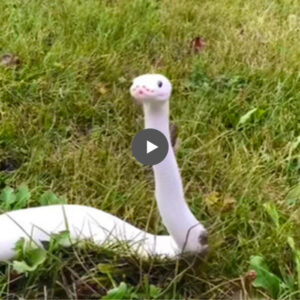
The giant anaconda is one of the most impressive creatures in the animal kingdom. As the largest living snake in the world, it is a true marvel of nature, capable of growing up to 30 feet long and weighing over 500 pounds. Here are some impressive facts about the giant anaconda:
- Habitat: The giant anaconda is found in the Amazon rainforest and other parts of South America. It prefers to live near bodies of water, such as rivers, lakes, and swamps, where it can hunt for prey.
- Size: The giant anaconda is the largest snake in the world, with some individuals measuring over 30 feet in length. The average size of an adult anaconda is around 20-25 feet, and it can weigh up to 500 pounds.
- Diet: Anacondas are carnivores and feed on a variety of prey, including fish, birds, mammals, and even other reptiles. They are known for their ability to constrict their prey to death, using their powerful muscles to squeeze them until they suffocate.
- Reproduction: Female anacondas are capable of giving birth to live young, with litters ranging from 20-40 offspring. The young anacondas are fully independent from birth and are capable of hunting on their own.
- Lifespan: The lifespan of a giant anaconda is around 10-15 years in the wild. In captivity, they can live up to 25 years.
- Behavior: Anacondas are solitary animals and are most active at night. They are excellent swimmers and can hold their breath for up to 10 minutes underwater.
- Conservation status: The giant anaconda is not currently considered a threatened species, but it is hunted for its meat, skin, and other body parts. Habitat loss due to deforestation is also a threat to their survival.
- Mythology: The giant anaconda has been the subject of many myths and legends throughout history. Some indigenous cultures in South America believe that the anaconda has spiritual powers and is capable of shape-shifting into human form.

The giant anaconda is a truly impressive creature, and its size and strength have captured the imagination of people around the world. While they are not commonly encountered by humans, their presence in the Amazon rainforest is a reminder of the incredible diversity of life that exists in our world. As we continue to learn more about these amazing animals, it is important to remember to respect and protect their natural habitats, ensuring that they will continue to thrive for generations to come.




